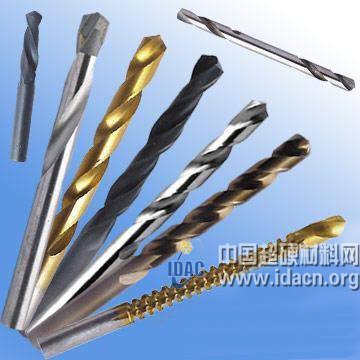**Abstract**
Seco has recently introduced its new CX1 and CX2 monolithic diamond-tipped drills, developed independently by Chinese researchers. These tools are designed to enhance tool life, boost productivity, and improve the quality of composite hole machining. Unlike traditional grain or double-sided PCD tip designs, the CX1 and CX2 solid carbide drills feature an integral PCD dome and cap, which help prevent material delamination and fiber uncutting. This innovative PCD technology also allows Seco to introduce the industry’s first three-flute PCD drill bit (CX1) for composite drilling.
A high-quality image of the product is shown below:

According to reports, the CX1 and CX2 drills offer the highest strength and sharpest cutting edge in Seco’s lineup. This performance is achieved through the use of a fully integrated PCD tip, which is sharper than a diamond-coated drill because the coating wraps around the cutting edge, causing it to dull more quickly. The new all-in-one PCD tip also provides advantages such as high cutting speed, low friction, excellent heat transfer, and high process reliability—plus it can be resharpened multiple times.
For efficient drilling of standard composites, the CX1's third cutting edge offers enhanced stability during hole machining, reducing vibration and improving roundness. Additionally, the dome-shaped tip creates a double-angled groove that significantly minimizes material delamination and fiber uncutting in pure composite applications. Such complex grooves would be impossible to grind using conventional welding or similar PCD techniques. Moreover, the dome cap design allows for up to three regrinds on the drill tip.
The CX2, on the other hand, is designed for laminated composites with multiple layers of aluminum or titanium alloys. It uses a flat-groove PCD cap, which, combined with its 180° tip angle, ensures efficient chip breaking and evacuation. This helps reduce the risk of metal chips damaging the borehole, especially at the interface between metal layers and composite materials. As a result, the CX2 maintains the surface finish of the composite intact.
The CX1 and CX2 series are available in a wide range of sizes, suitable for drilling holes from 3.26 mm to 9.53 mm (0.125" to 0.375"). Chamfering options are also available, making the drills even more versatile for different application needs. Whether you're working with carbon fiber composites or multi-layered materials, these new drills offer a reliable and efficient solution for modern manufacturing.
Microbend Mass Flow Meter
Sealand is a trustworthy manufacturer of Microbend Mass Flow Meter, Microbend Mass Flowmeter, Microbend Coriolis Mass Flow Meter, Microbend Coriolis Mass Flowmeter.
Site Selection for Mass Flow Meter Installation
a) Sensor stays away from mechanical vibration source, for example, pump. Use flexible pipe to connect meter with pipeline if inevitable. The housing of meter must be standalone, out of touch with any other device. There must be 3 times the size of sensor between 2 sensors if there are many flow meters on the same pipeline, to avoid resonance.
b) Do not install sensor on pipeline that easily expands with hot and contracts with cold, especially near expansion joint, which leads to a worse stability.
c) Sensor stays away from industrial electromagnetic field, such as large generator and transformer, better 5m at least. Such device influences the performance of drive coil and pickoffs. Make sure magnetic field intensity less than 400A/m.
d) Sensor shall be installed on lower pipeline, to be easily full of fluid.
e) Make sure Ex-mark meet application requirements if in hazardous area.
f) Build a sunshade if the meter is under direct solar radiation. g) Keep the meter from corrosive liquid.
Microbend Mass Flow Meter, Microbend Mass Flowmeter, Microbend Coriolis Mass Flow Meter, Microbend Coriolis Mass Flowmeter
Zhejiang Sealand Technology Co., Ltd. , https://www.sealandflowmeter.com
